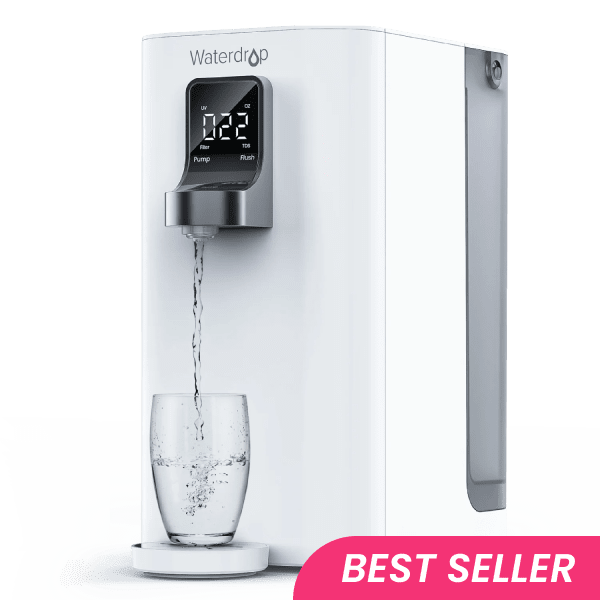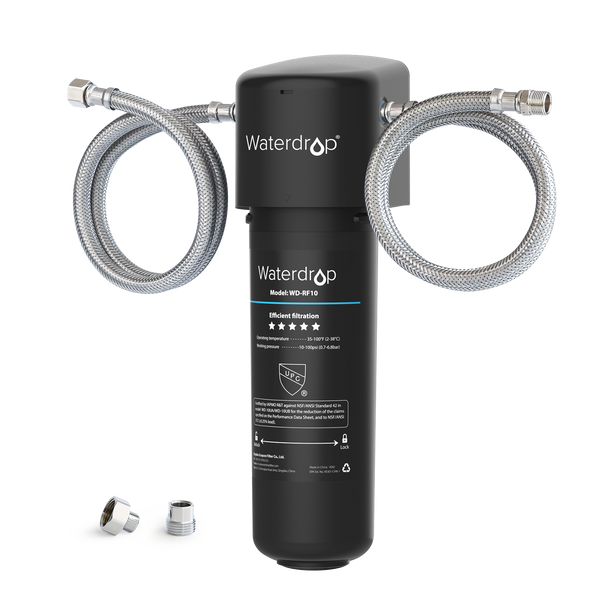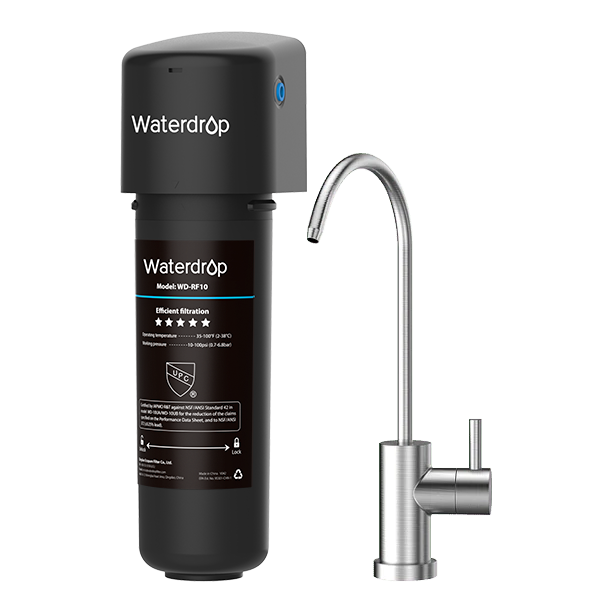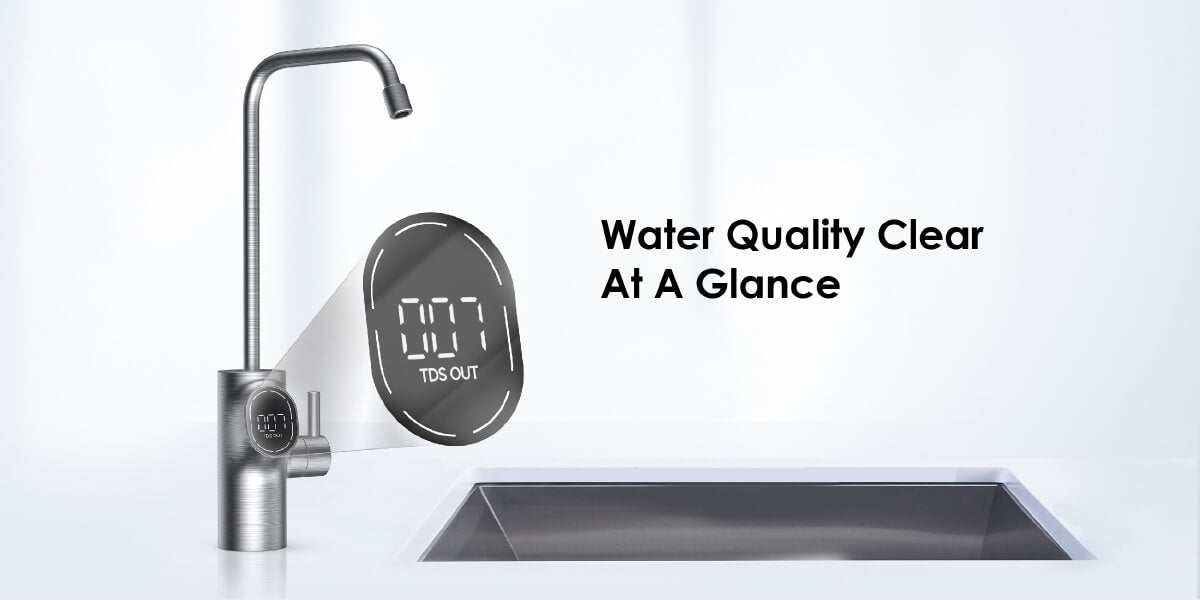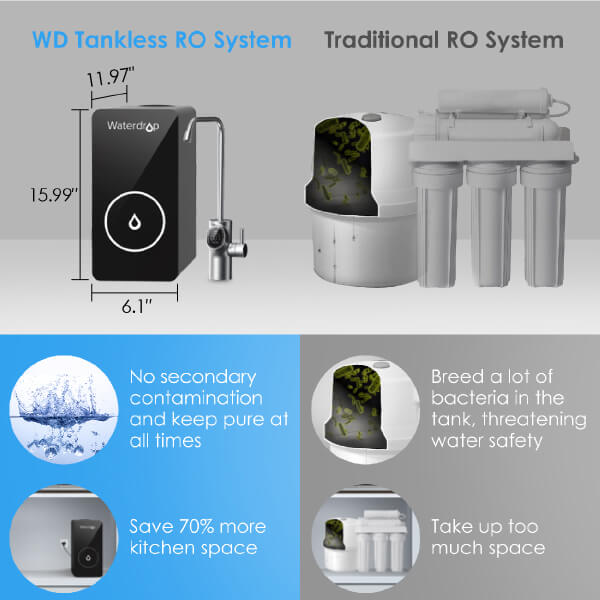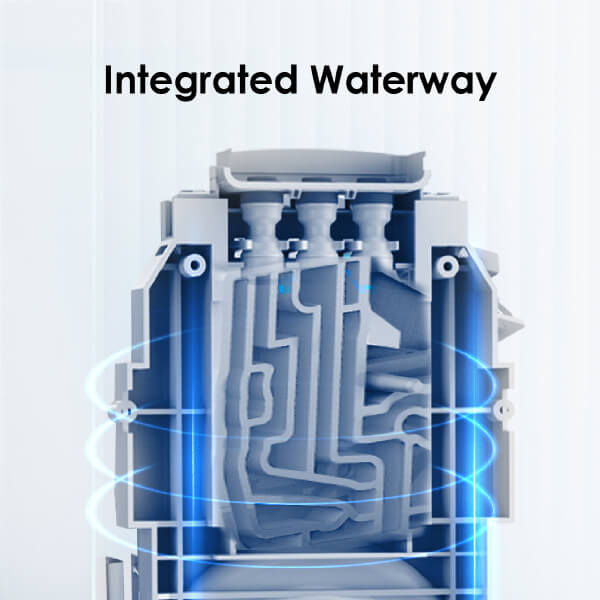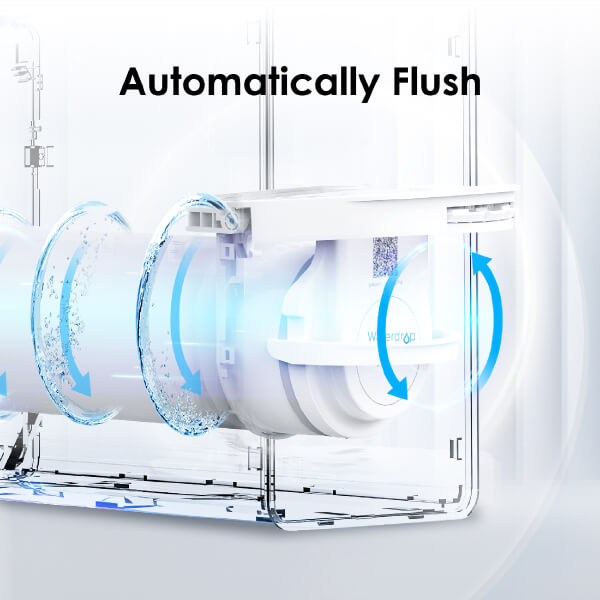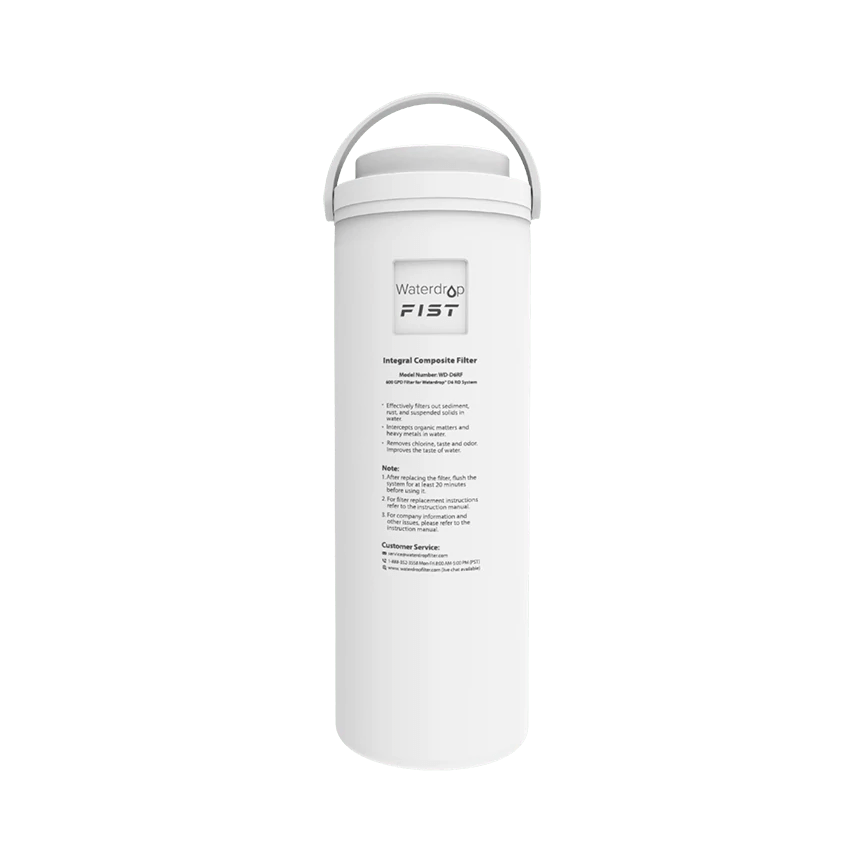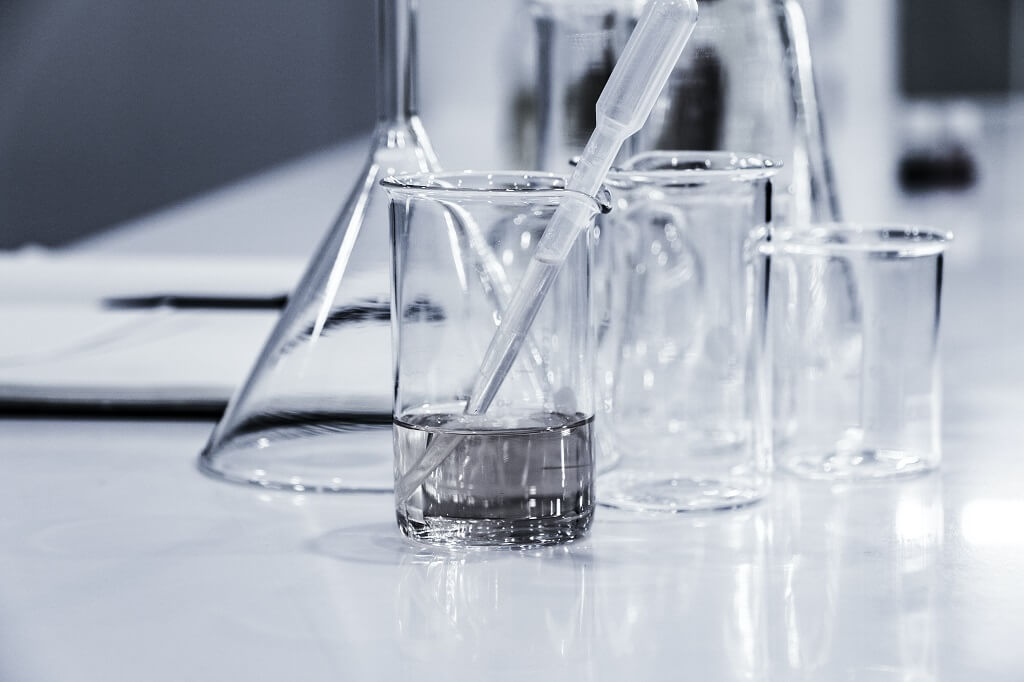What is new about the Waterdrop D6 RO water filter system?
The five-in-one composite filters in the Waterdrop D6 Water Filtration
System combines multiple filtration technologies into one.
The first PP cotton layer filters out
sediment, rust, and other large particles.
The activated carbon block layer reduces organic matter
and chlorine.
The second PP cotton layer further reduces suspended matter and other
impurities.
The reverse osmosis membrane layer has a filtration accuracy of 0.0001μm, which
intercepts TDS, salt, nitrates, PFAS, lead, sodium, chromium, benzene, etc.
The post-activated carbon
block layer reduces taste and odor to improve the taste of water.
What impurities can D6 RO water system remove?
The FIST composite filter, specially adopting DOW RO membrane can
conveniently reduce most of pollutants including TDS, lead, chlorine, salt, nitrates, PFAS, lead,
sodium, chromium, benzene, etc. The filtration process also eliminates bad taste and odor, leaving you
with clean and great-tasting drinking water.
How to read the TDS? And why are there two numbers?
The faucet offers a real-time TDS display of your water quality at any
point in time. The in-built LED and TDS sensors become active when the faucet is on. D6 reverse osmosis
filter system has two TDS detectors, detecting TDS level before and after filtration respectively. It
shows TDS level before filtration at first and then indicates TDS level after filtration two seconds
later.
Does this home reverse osmosis system fit in my under sink?
It’s of 15.98 x 5.98 x 11.97 inches size and is the smallest 600GPD RO
system in the market. The D6 adopts a simple tankless design. It requires little space in your kitchen
and can conveniently sit under your sink without obstructing your perfect kitchen interior.
How do I install Waterdrop RO water filter system?
Along with a well-organized instruction manual, you can find a
step-by-step RO water filter system installation video on the Waterdrop YouTube channel.
How often do I need to change the filter?
Filter use: 12 months or 1,000 gallons, whichever comes first.
What is RO water filter system?
Reverse osmosis (RO) is a water purification process that uses a partially
permeable membrane to reduce ions, unwanted molecules and larger particles from drinking water. The
result is that the solute is retained on the pressurized side of the membrane and the pure solvent is
allowed to pass to the other side.
Does this reverse osmosis water system reduce chromium?
All of our reverse osmosis water filtration system are designed to reduce
94-99% of Chromium-6 in your water.
How well does this RO water filter system reduce nitrates?
All of our reverse osmosis water filter systems are designed to reduce
85-90% of Nitrates in your water.
Does this RO water system remove chemicals used to soften water?
This system will reduce chemicals in the water as well as sodium from a
salt-based water softener.
Can this filter be used as a reverse osmosis water system for home?
No. This RO water system is just a point-of-use water treatment system.
Will this reverse osmosis filter system completely reduce fluoride?
All of our reverse osmosis water filtration systems are designed to reduce
94-99% of fluoride in your water.
Is this reverse osmosis water filter system unit suitable for well water?
We do not recommend using well water as source for our RO systems.
The
reasons are as follows:
1. Large particles.
Compared to municipal tap water, the well water is
rich of large particles, which will clog the filters easily, and shorten their lifetime
significantly.Please note that the filters will still need to be replaced more frequently, even if you
have added a pre-filtration system.
2. Composition
The well water has very complicated compostion,
and some of them (apart from the large particles) can cause the filter or internal valve to be clogged
and prevent the RO system from normal performance.
3. Water pressure
The well water may not
provide the feed water pressure that the RO system requires (14.5 psi min.). Furthermore, the water
pressure will be even lower after passing through pre-filtration systems.
Does this home reverse osmosis system require an under-sink electrical outlet?
Since the system has the booster pump it will require an electrical outlet
for the system to work.
Does this RO water filter system remove salt from my water softener?
a. Please note that the water softener is NOT designed to provide
drinkable water. Its main function is to soften the water for washing clothes, taking a bath, flushing
toilets, etc.
b. If a salt-based water softener is installed BEFORE the RO unit:
-The filtered
water could be salty since our unit can only remove 90% salt added by the softener.
-The RO filter's
lifetime could be shortened due to the unusual amount of sodium in the source water, which is NOT
covered by the warranty.
-We have already put a clear warning on the product page regarding this
aspect.
c. If your water softener is NOT salt-based, then our RO unit should work properly with
it.
Does this reverse osmosis water filter system lower the pH of the water?
Yes, this reverse osmosis filter system should or could reduce pH but it
depends on the source water and the mineral content of the source water.
What does Pure to Drain Rate mean?
The reverse osmosis water filter relies on a semi-permeable membrane to
filter out impurities from drinking water. When the tap water is compressed through the RO membrane, it
produced pure water and waste water. The ratio of pure water to waste water is called wastewater ratio.
1:1 wastewater ratio means 1 gallon water is wasted per 1 gallon purified, and 2:1 wastewater ratio
means 1 gallon water is wasted per 2 gallon purified. The higher the wastewater ratio is, the less
waster water produced during the filtration process. During the use of RO water filter, the actual ratio
might be lower than the labeled, depending on many factors such as water quality, pH, pressure and
temperature.





